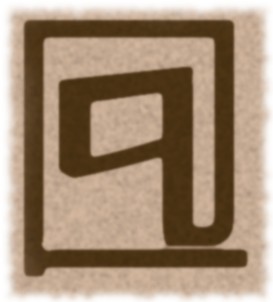Some things in English that behave like Chinese characters
[ ](/china/mandarin/cmn-writing/english-things-like-characters/attachment/at-yingzi-jiong-jiu-xi/” rel="attachment wp-att-2646)The writing system is probably the most famous thing that sets Chinese apart from other languages. When most people think of Chinese, they think of characters.
](/china/mandarin/cmn-writing/english-things-like-characters/attachment/at-yingzi-jiong-jiu-xi/” rel="attachment wp-att-2646)The writing system is probably the most famous thing that sets Chinese apart from other languages. When most people think of Chinese, they think of characters.
How exactly they function as a writing system is usually quite tricky grasp at first, but there are a few bits and pieces in English that have some similarity to Chinese characters.
Numerals
The most common one is numerals. To read 1, 3 or 8, you have to have memorised the meaning and pronunciation for them. They are symbols that have a specific pronunciation and meaning, like Chinese characters.
Obviously there are some pretty big differences, too. No radicals, for one. And numerals don’t really combine into words in the same way that hanzi do. But there is a difference in the way you have to process ‘9’ compared to ‘nine’ when reading (or is there? see below).
This becomes clearer with things like ‘161284596’ vs ‘one hundred and sixty one million, two hundred and eighty four thousand, five hundred and ninety six’. The first one is trickier to read out loud because really it’s just one complex symbol for that number, and one that you haven’t memorised.
Mathematical operators
Mathematical operators can also be a bit like Chinese characters. When +, -, = and so on are used in written English, you have to know that they’re symbols with a meaning and pronunciation. There’s no way to convert them into sound then get the meaning from that like you can with other English words.
Some symbols
Again, a few other symbols that you just have to memorise. Currency signs like £, €, $ and so on. The ampersand (&) is also a good one, as is the ‘degrees’ ° symbol. These aren’t like other symbols that English people understand, such as a circle with a line for ‘no entry’ or ‘not allowed’. Neither are they like punctuation marks. They express the same meaning everywhere, and are always pronounced the same.
@ and ©
These two are a little bit more interesting as they sort of have a phonetic radical. The letter in the middle is there to hint at the pronunciation, and the rest of the symbol indicates that this has a specific meaning no matter where you put it. Again, they’re nearly always pronounced in the same way.
英字?
Could you call this sort of thing 英字? Probably not. A lot of them aren’t even English in origin, and 英字 would probably just make most people think of the Latin alphabet. But it’s good to remember that the English and Chinese reading process might be a little bit more similar than you think. This is especially true when you consider the next point.
Words in general
I would say that people read English and Chinese in a very similar way. It’s not true that readers of English actually use the phonetic sequence in front of them to do some sort of sequenced decoding like: letters ⇒ sound ⇒ meaning. That’s what children do when learning to read; experienced readers only do it with unfamiliar words.
What actually happens is that you look at the general shape of words, which you’ve memorised over years of exposure and practice. Wehn yuo raed tihs wried snetnce eiasly yuo risleae taht tihs is ture. Even though the letters are jumbled up there, because the general shape of the words is about right, it’s actually not that hard to read. What’s throwing you off, I’d say, is not that the phonetic sequence is wrong, but that the general outline of the words is not quite right. This suggests that English is read by shape, not sound, just like Chinese is.
